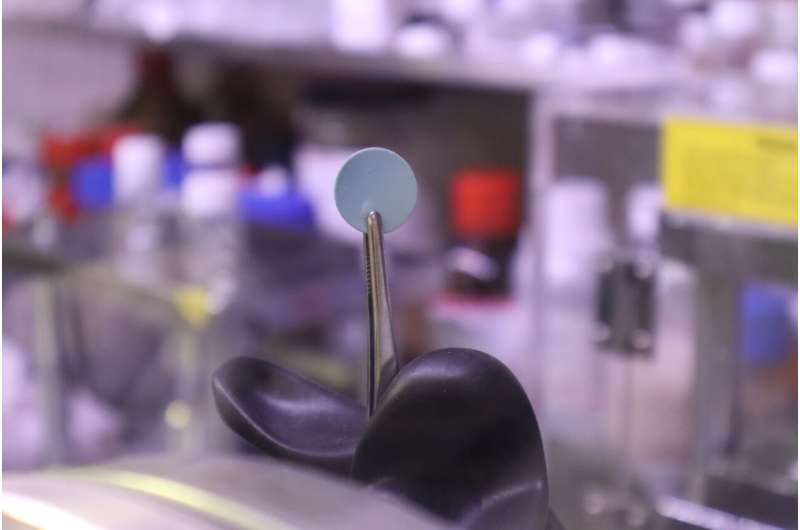Developing sensor technology to detect fires before they start

Researchers at the Madrid Institute for Advanced Studies in Materials Science (IMDEA Materials) are working on fire safety systems that can detect and warn of danger before a fire breaks out.
Fire alarms generally operate by detecting the presence of smoke, open flame or higher-than-normal levels of carbon monoxide. Such indicators, however, are byproducts of a fire once it has already started.
By using functional nanomaterials-based fire sensor technology under development at IMDEA Materials, researcher Ms. Xiaolu Li said that she hoped to take a step forward.
"A very important element of this project is that, with these new devices, we are able to detect fire danger very early in the process, before the fire breaks out," she said. "Once a fire starts, it's very difficult to control."
"A lot of common household materials will start to burn at between 300 and 500 degrees [Celsius]. Right now, however, we are testing our sensors at between 200–250 degrees. That means you will be able to receive a warning with enough time to possibly prevent the fire from happening in the first place."
The technology, which was recently published in Construction and Building Materials and which is currently under development, has been shown to work at temperatures as low as 250 degrees Celsius with a response time of less than a second.

However, Li said that the goal of the ongoing work was to achieve sensor responsiveness from temperatures as low as possible in order to give further advanced warning.
The sensors detect temperature changes by monitoring the chemical structure of the material being analyzed. As the material heats, its conductive performance is altered. This change in conductivity can be used to generate a warning of imminent fire risk.
Such warnings could also take a variety of forms beyond the typical flashing lights or sound-based alarms of existing fire detection systems. This new generation of alarms is aiming to take advantage of developments in shape and color-change materials, as well as multifunctional materials, to create a wider range of risk indicators.
Li explained that rather than existing as standalone sensors like a traditional smoke detector attached to a wall or roof of a house, IMDEA Materials' fire sensors would be connected directly to the buildings' physical materials.
"In buildings, for example, the wallpaper that is used as decoration can be modified to be used as a fire sensor," she said. "You could also use other materials like wood or foam insulation which could also provide this warning function."
"The material would be connected to a receiver device, which would be able to monitor indicators like temperature change and then send that information to the signal emitter."

Previously published results in Colloids and Surfaces A: Physicochemical and Engineering Aspects, meanwhile, have shown that the intelligent, custom-made wireless communication system being developed by researchers has been able to emit warning messages on screens at distances of up to 20 km from the fire.
Li's fire sensor technology builds on a decade of research carried out in the field of fire-retardant materials under the banner of IMDEA Materials' High-Performance Polymers and Fire Retardants group led by Prof. Dr. De-Yi Wang.
And despite having shown great promise to date, research work into the new sensor technology continues. For example, current color and shape-change warning indicators are irreversible, meaning that they could only be used once. Researchers are also continuing to improve the temperature sensitivity of the sensor technology, as well as the reach and effectiveness of the wireless warning system.
More information: Xiaolu Li et al, Tailored P/Si-decorated graphene oxide-based fire sensor for sensitive detection at low-temperature via local and remote wireless transmission, Construction and Building Materials (2022). DOI: 10.1016/j.conbuildmat.2022.128600
Xiaolu Li et al, Smart Low-temperature responsive fire alarm based on MXene/Graphene oxide film with wireless transmission: Remote real-time luminosity detection, Colloids and Surfaces A: Physicochemical and Engineering Aspects (2022). DOI: 10.1016/j.colsurfa.2022.129641




















